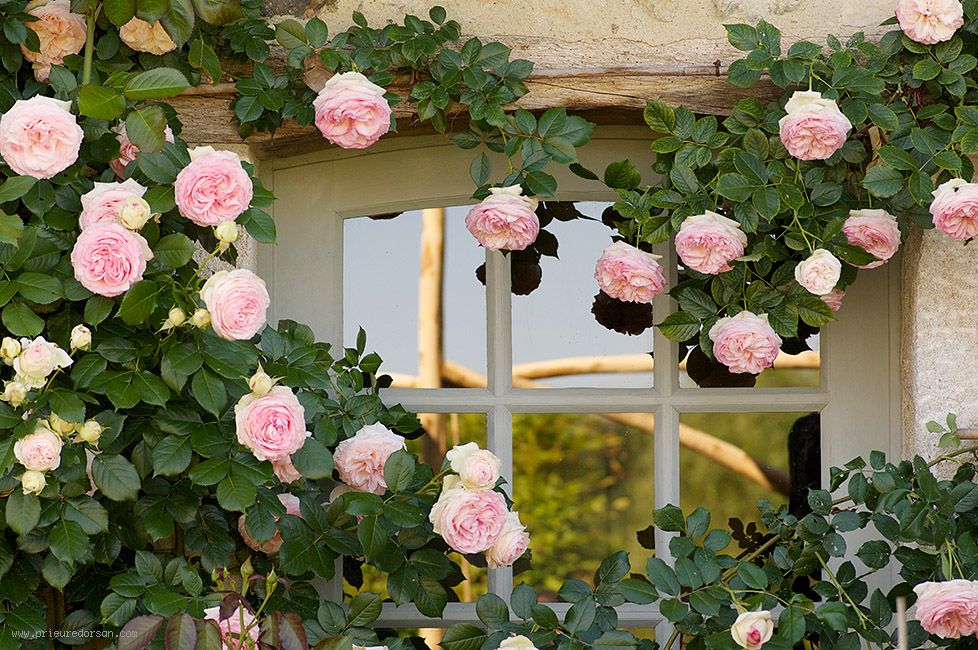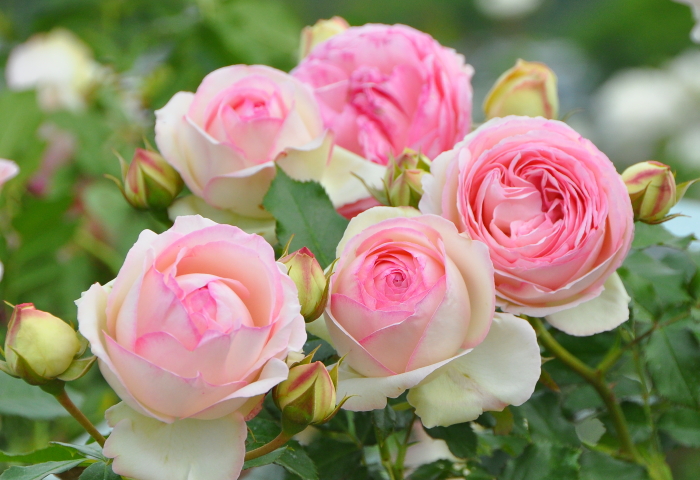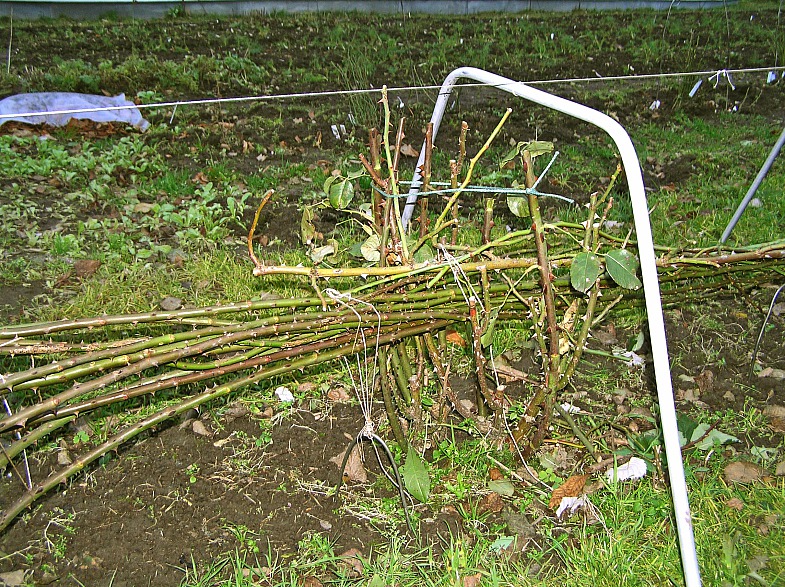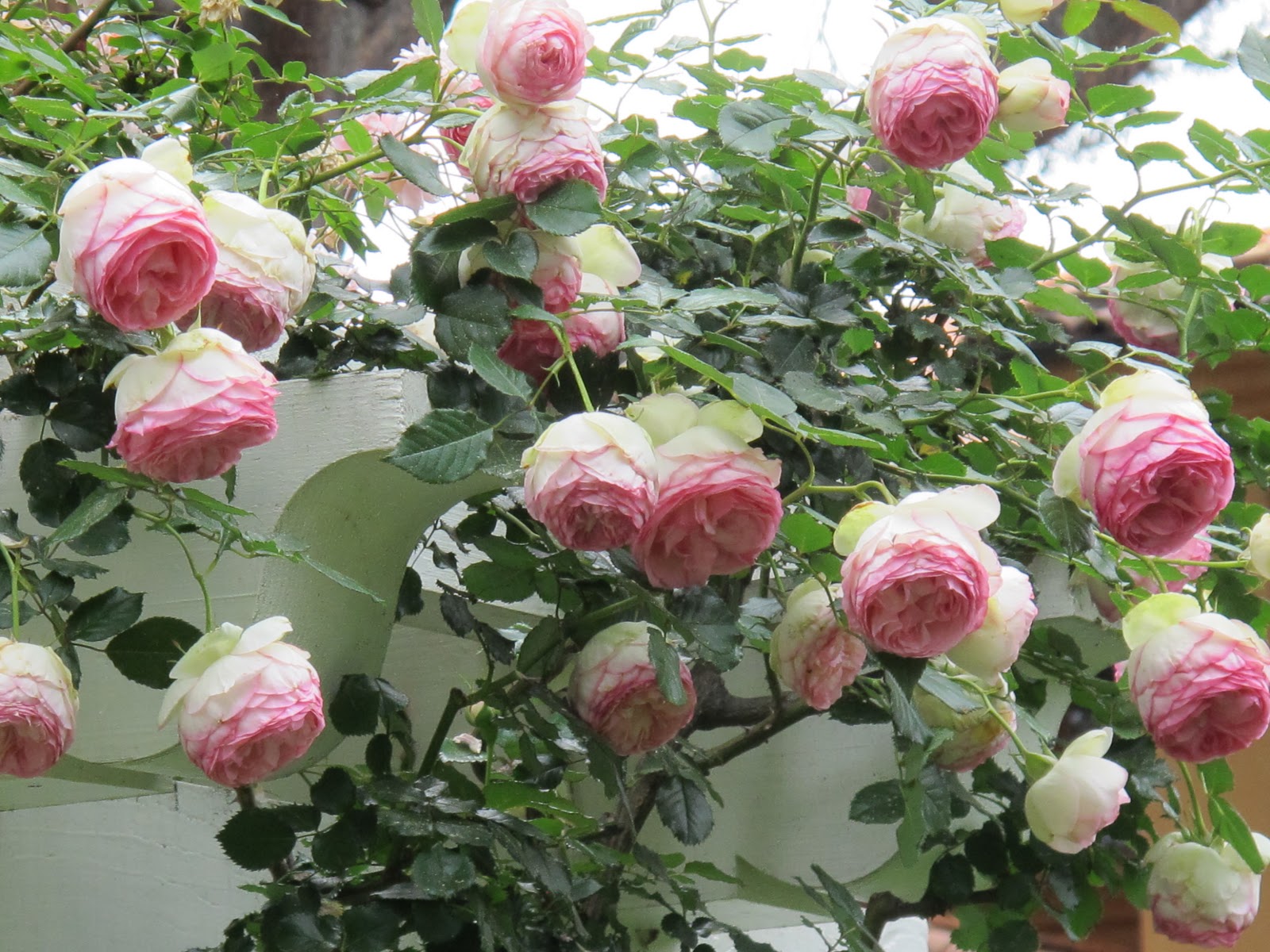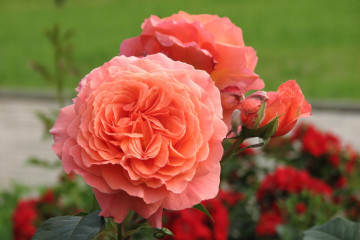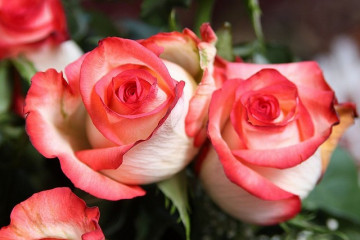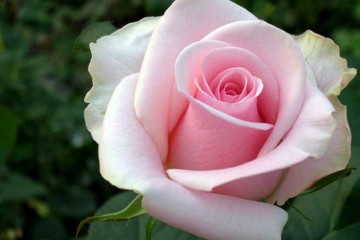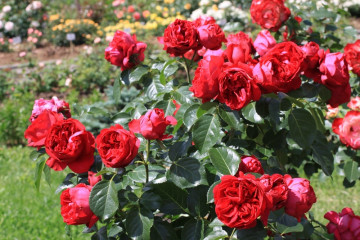Rose Eden Rose (Eden Rose) - description and characteristics of the variety
Content:
French climber Pierre de Ronsard of the famous Meillian Romantica series is better known as Eden Rose (rose of paradise). The variety was named after the French poet of the Renaissance Pierre de Ronsard. In 2006, the Eden Rose was named "The World's Favorite Rose" by the World Federation of Gardeners. In Russia, little is known about the history of Pierre de Ronsard, but the rose itself is seriously appreciated.
Characteristics of the variety
Eden Rose (or Pierre de Ronsard MEIviolin, Eden, Eden Rose 85, Eden Climber) belongs to the Large-flovered Climber group. It is characterized by large glasses like those of a hybrid tea rose and remontant flowering.
Densely double flowers in ivory shade, with a pink breath along the edge of the petal, droop under their own weight. The variety was created for Mediterranean gardens; in cool regions, the buds may not open until the end, giving the rose an additional charm.
Description: the color of the petals is changeable, in cold weather it is closer to porcelain-pink, with green on the outer petals. In warm climates, pink is more intense, the flowers are elegant, bright, open in the shape of a bowl.
The plant forms a well-leafy branchy bush 2.5-3 m high, 1.5-2 m wide. Shoots are tough, with a few thorns. Pierre de Ronsard's aroma is weak, it can be felt in the morning, or in cool weather.
Flowers appear one at a time or in small clusters of 3-5 buds. Most impressive first climber bloom. Flowers are located along the entire length of the shoots, there are many of them. The flower is decorative for about a week, does not like rain, it is recommended to shake off the remaining moisture from the branches. In temperate and warm climates, this variety can bloom three times.
Among the advantages of the variety is resistance:
- to black spot;
- powdery mildew;
- perfectly tolerates planting in full sun.
Growing features
The Eden Rose Climbing Rose is rarely damaged by pests.
Basic requirements for plant care:
- winter shelter: the plant is able to withstand frosts up to 23 ° C, but it should be remembered that in snowless winters, as well as during temperature changes during thaws, the buds can be damaged. As a result, flowering will be weaker and will begin later;
- the rose does not clean itself well, so pruning of wilted flowers is required.
- before planting, it is necessary to think over the design of the support for the rose - the older the bush, the more difficult it is to hold it.
Landing
It is better to place the rose in a dry place, not heated during heavy rains. In Russian latitudes, it is preferable to plant a rose in a well-lit area, protected from strong winds and drafts.
The bush grows well on fertile, humus-rich soils. For the growth of the root system, it is important that the soil is air and moisture permeable. To do this, sand must be added to dense clay soils and loam.
The planting pit 50 - 70 cm deep is filled with the nutrient mixture necessary for rapid rooting:
- peat;
- vegetable compost;
- sod layer of soil.
The components are taken in equal proportions, 250 - 300 g of wood ash are added.
A climbing rose is planted with a slight slope, this makes it easier to lay the plant for the winter. It is recommended to deepen the graft by 10 - 13 cm. After planting, the soil around the rose is tamped and watered abundantly.
If you plan to plant several plants, a distance of 2.5 - 3 m should be provided between them.This is necessary so that the plants do not compete with each other, as well as to ensure air circulation inside the bush.
Pruning and tying
Depending on the choice of support, the shoots are fixed in a fan, arched, alternating directions. The main condition for stimulating profuse flowering is to lay the branches horizontally.
Up to 3 years old, only dry, damaged or diseased branches are removed from a rose. They begin to form a bush when the plant comes into force, gives out a full-fledged wave of flowering.
Shoots of the second and third order, after removing the faded buds, are shortened by 2/3. In the spring, thin side lashes and shoots older than 3 - 4 years old are removed. They bloom poorly and consume a large amount of nutrients.
Rosehip shoots can appear from the stock throughout the season, they can be recognized by their light color. Wildlife branches have 7 leaves, a cultivated rose has 5. Such shoots must be removed from the beginning of their growth.
Watering
The Eden Rose climbing bush produces many buds, so it requires abundant watering during the budding period. It is necessary to water the plant every 5-7 days, choosing the time in the early morning or closer to sunset. For irrigation, 12-15 liters of water are enough. It is recommended to mulch the root area.
Top dressing
During the season, an adult rose is fed to get re-flowering and good growth.
Organic fertilizers contain nitrogen, stimulate shoot growth and root development. They are brought in until mid-summer:
- vegetable compost;
- rotted manure;
- infusion of bird droppings;
- horn chips, bone or blood meal.
Complex fertilizers, enriching the soil with potassium, phosphorus and other necessary elements, are applied throughout the growing season.
Shelter for the winter
Under the shelter, they begin to prepare a rose with the arrival of autumn:
- from the beginning of September, the bush ceases to be watered;
- in the middle of autumn, phosphate fertilizers are applied;
- before laying, the leaves are removed from the shoots, spores-causative agents of fungal diseases overwinter on them;
- the rose bush is spud high (30-40 cm), you can use sand or shavings;
- the lashes are bent, if necessary in several steps, wrapped with a non-woven covering material and laid on spruce branches.
A luxurious duet will be composed of the rose Eden and the terry clematis Multi Blue. Nearby, you can place fragrant lavender, blue and blue delphiniums, foxglove, they will emphasize the romantic elegance of flowering. Rosa Pierre de Ronsard is a masterpiece variety, providing it with competent care, you can enjoy your personal garden paradise for many years.
